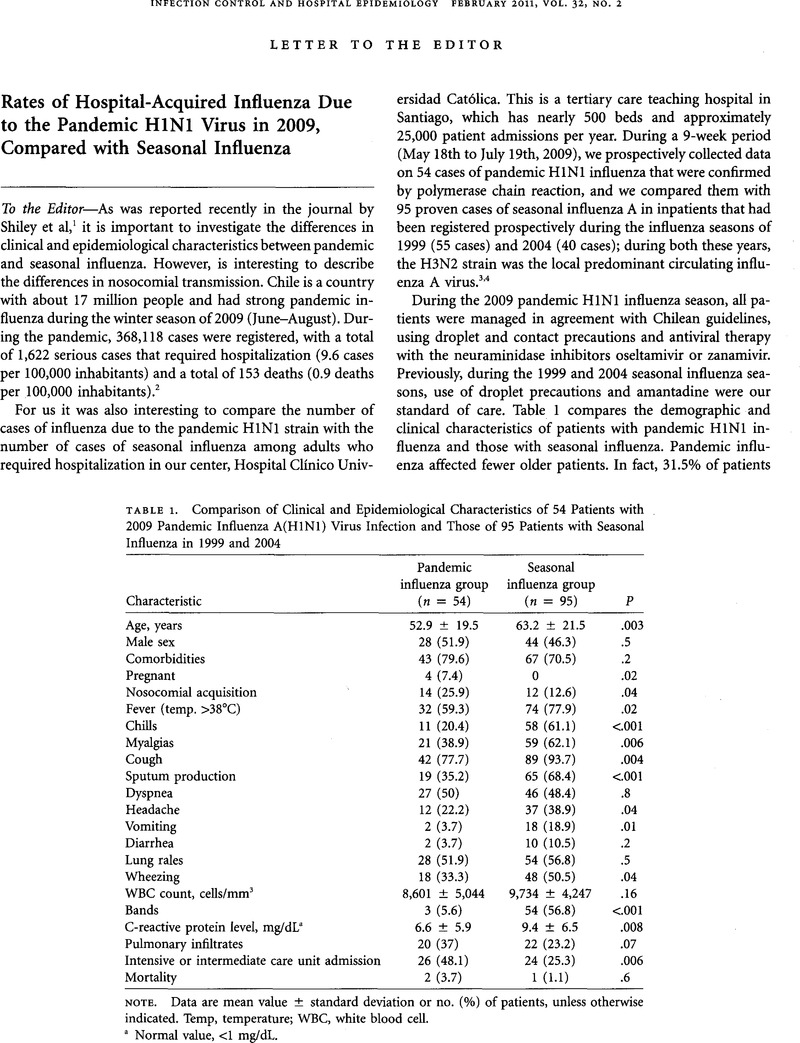Crossref Citations
This article has been cited by the following publications. This list is generated based on data provided by Crossref.
Angeles-Garay, Ulises
Gayosso Rivera, José A.
Zacate-Palacios, Yazmín
Rechy-Luna, Miguel
Terrazas Estrada, Juan J.
and
Arias-Flores, Rafael
2011.
Características y contagiosidad de influenza A(H1N1) y estacional en trabajadores sanitarios y pacientes de un hospital en la ciudad de México.
Enfermedades Infecciosas y Microbiología Clínica,
Vol. 29,
Issue. 9,
p.
679.
Weedon, Kathryn M.
Rupp, Angela H.
Heffron, Annie C.
Kelly, Sinead Forkan
Zheng, Xiaotian
Shulman, Stanford T.
Gutman, Peggy
Wang, Deli
Zhou, Ying
Noskin, Gary A.
and
Anderson, Evan J.
2013.
The impact of infection control upon hospital-acquired influenza and respiratory syncytial virus.
Scandinavian Journal of Infectious Diseases,
Vol. 45,
Issue. 4,
p.
297.





